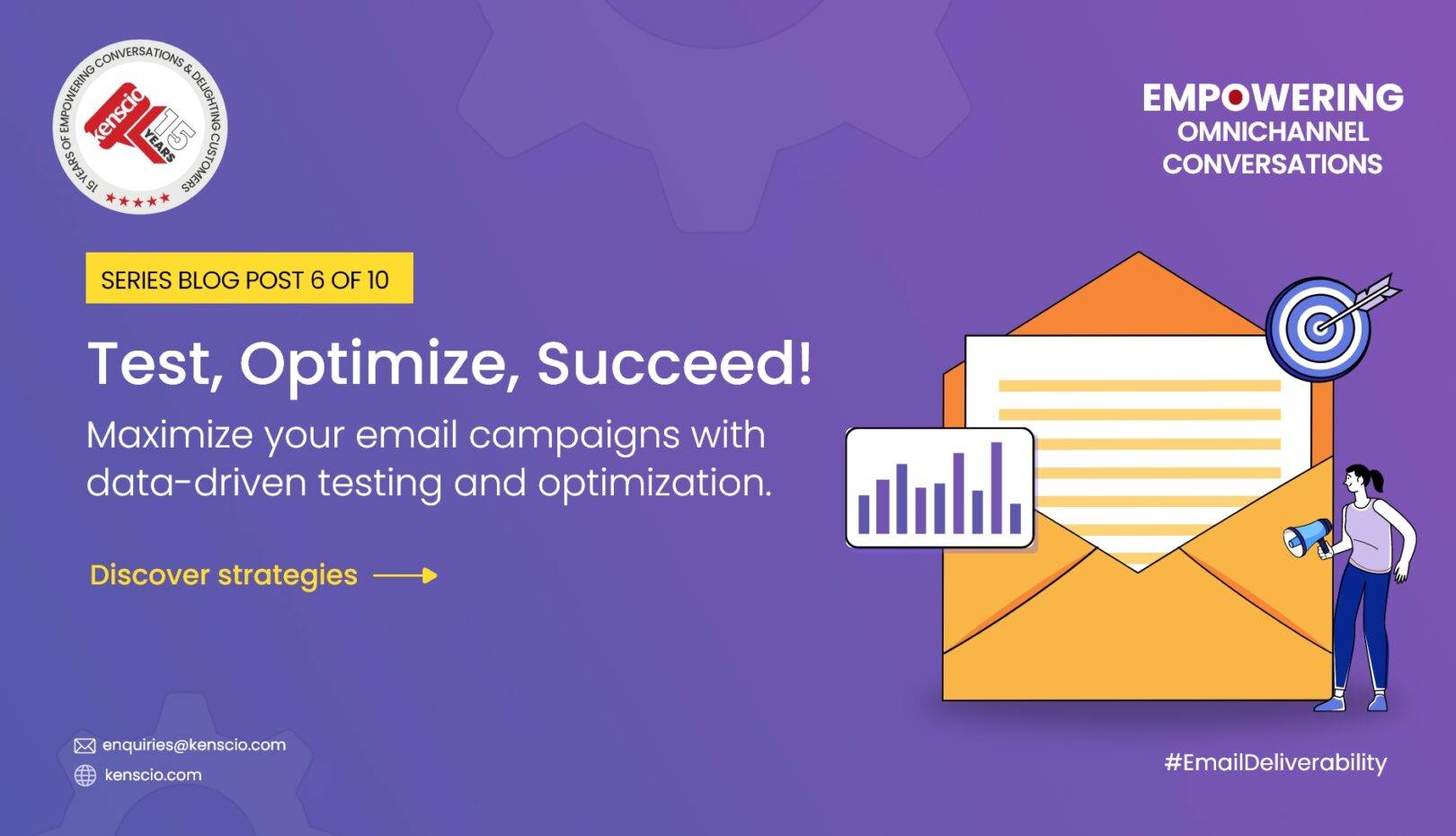- January 28, 2025
- by Hardik Vyas
Series Blog Post 6 of 10: Email Testing and Optimization – A Data-Driven Guide
Did you know that marketers who A/B test their email campaigns see a 37% higher ROI compared to those who don’t? In today’s crowded inbox landscape, small changes can have a big impact. From tweaking subject lines to refining send times, testing and optimization are the keys to unlocking your email marketing potential. By taking a data-driven approach, you can ensure your campaigns resonate with your audience, drive engagement, and maximize ROI.
Key Areas to Test
Subject Lines:
- Subject Line A: “Exclusive Deal—Save 20% Today!”
- Subject Line B: “Don’t Miss Out: 20% Off Ends Tonight.”
Sender Name:
The sender name can influence trust and open rates.
Test Personalization: Use names like “Emily from [Your Company]” versus just the company name.
Examples:
- Sender Name A: “The Kenscio Team”
- Sender Name B: “Sam from Kenscio”
Preheader Text:
Often overlooked, preheader text can increase click-through rates when used effectively.
A/B Testing: Compare preheader text that complements the subject line with standalone calls to action.
Examples:
- Preheader A: “Discover our latest deals before they’re gone!”
- Preheader B: “Click now for exclusive savings.”
Email Content:
The layout, visuals, and tone of your email significantly impact performance.
Test Visuals and Personalization: Compare layouts, color schemes, and dynamic content.
HTML vs. Plain Text: Experiment with both to see which resonates better with your audience.
Call to Action (CTA):
The placement and design of your CTA can make or break your conversions.
A/B Testing: Test button colors, sizes, wording, and placement.
Examples:
- CTA A: “Shop Now” (top of the email)
- CTA B: “Claim Your Discount” (bottom of the email)
Send Time:
Timing can affect open and click-through rates significantly.
A/B Testing: Test different times of the day and days of the week.
Examples:
- Test A: 8:00 AM on Tuesday
- Test B: 6:00 PM on Friday
The Importance of Metrics
Open Rate:
- Why It Matters: Reflects the effectiveness of your subject line and sender name.
- What to Do: A low open rate suggest
Click-Through Rate (CTR):
- Why It Matters: Measures the relevance and appeal of your email content and CTAs.
- What to Do: Optimize CTA wording, placement, and design if your CTR is low.
Bounce Rate:
- Why It Matters: A high bounce rate indicates problems with your email list.
- What to Do: Regularly clean your list to remove invalid or inactive addresses.
Conversion Rate:
- Why It Matters: Tracks how well your email drives the desired action, such as purchases or sign-ups.
- What to Do: Refine your CTA and ensure a seamless user experience on landing pages.
Unsubscribe Rate:
- Why It Matters: Indicates whether your content aligns with audience expectations.
- What to Do: Reevaluate your content strategy if this rate is unusually high.
Tools for Email Testing and Optimization
- Email Marketing Platforms: Platforms like KenMail, Mailchimp, and Constant Contact offer built-in A/B testing and reporting features.
- Google Analytics: Use tracking codes to measure post-click engagement and identify high-performing campaigns.
- Heat Maps: Tools like Crazy Egg, Microsoft Clarity and Hotjar help visualize recipient interactions, revealing insights into user behavior.
Conclusion
Testing and optimizing your email campaigns isn’t just a best practice—it’s a necessity. By taking a data-driven approach and focusing on key elements like subject lines, CTAs, and send times, you can continuously refine your strategy for better results. Tracking metrics ensures your campaigns remain relevant and effective, helping you maximize engagement and ROI.
At Kenscio, we specialize in advanced email marketing strategies, including A/B testing, analytics, and optimization. Let us help you craft campaigns that deliver measurable success.
